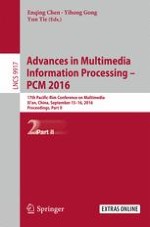2016 | OriginalPaper | Buchkapitel
Sign Language Recognition with Multi-modal Features
verfasst von : Junfu Pu, Wengang Zhou, Houqiang Li
Erschienen in: Advances in Multimedia Information Processing - PCM 2016
Aktivieren Sie unsere intelligente Suche, um passende Fachinhalte oder Patente zu finden.
Wählen Sie Textabschnitte aus um mit Künstlicher Intelligenz passenden Patente zu finden. powered by
Markieren Sie Textabschnitte, um KI-gestützt weitere passende Inhalte zu finden. powered by
